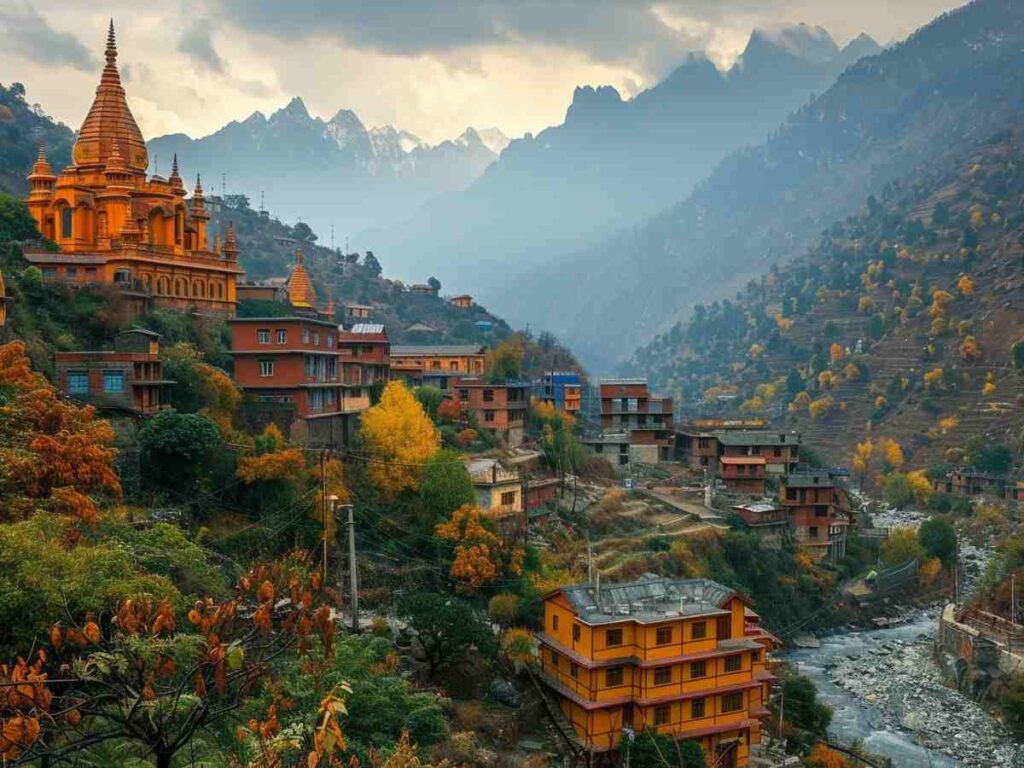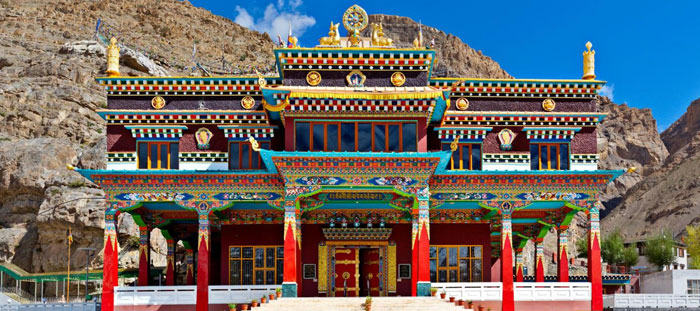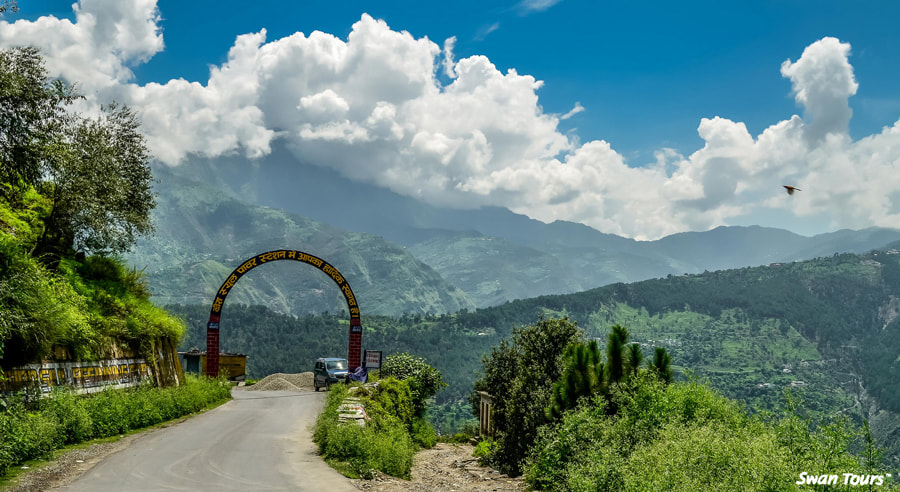Exploring Chamba: The Hidden Gem of Himachal Pradesh
Situated in the Himalayas’ lap, Chamba is Himachal Pradesh’s most scenic and culturally vibrant district. Famous for its old temples, awe-inspiring mountains and valleys, and colorful festivals, Chamba is a haven for tourists who are looking for both adventure and relaxation. Situated in Himachal’s northwestern region, Chamba borders Jammu & Kashmir and Punjab and hence is an interesting confluence of cultures and tradition.
A Glimpse into Chamba’s History

Chamba boasts a rich history that dates back to the 6th century when it was established by Raja Sahil Varman. Historical accounts state that the king shifted his capital from Brahmapura (near Bharmour in the present times) to Chamba as a tribute to his daughter, Champavati. The area is known for its distinct fusion of Pahari and Mughal architecture, reflected in its temples, palaces, and traditional houses. Over the centuries, Chamba has retained its old-world charm while embracing modernity, making it an intriguing destination for history enthusiasts.
The region has also been referred to in several texts and epics and has associations with the Mahabharata and ancient Hindu texts. It was a significant center in British times, valued for its strategic position and stunning vistas. Chamba has continued to be an important cultural center, which has managed to maintain its heritage by retaining its local arts, crafts, and religious festivals.
Must-Visit Places in Chamba
Chamera Lake – A beautiful artificial lake formed by the Chamera Dam on the Ravi River. It has boating facilities and breathtaking sights of the nearby mountains. The adventure enthusiasts also get to experience water sports like kayaking and paddle boating here.
Kalatop Wildlife Sanctuary – This sanctuary, which is near Dalhousie, features rich flora and fauna, with Himalayan black bears, leopards, and pheasant species of birds. It is a wildlife photographer’s and nature lover’s paradise.
Bhuri Singh Museum – Set up in 1908, this museum takes its name from Raja Bhuri Singh and presents the cultural heritage of the region, ranging from Pahari paintings, manuscripts, coins, to some of the Chamba Kingdom’s rare artifacts.
Laxmi Narayan Temple – Constructed in the 10th century by Raja Sahil Varman, this temple complex is dedicated to Lord Vishnu. The design is one with intricate stone carvings and a shikhara-style tower typical of ancient North Indian temples.
Khajjiar – Also referred to as the “Mini Switzerland of India”, Khajjiar is a stunning meadow with dense deodar forests and snow-covered peaks all around. The greenery and the peaceful Khajjiar Lake make it a perfect place for relaxation and picnics.
Manimahesh Lake – At an altitude of 4,080 meters, this holy lake is located in the vicinity of the Pir Panjal range and draws thousands of devotees during the annual Manimahesh Yatra in honor of Lord Shiva.
Rang Mahal – The largest of Himachal Pradesh palaces, this 18th-century palace is a blend of Mughal and British architectural designs and features exquisite Chamba Rumal embroidery and murals of local myths.
Cultural Richness and Festivals

Chamba is famous for its rich cultural heritage, particularly its colorful festivals that unite the locals and tourists alike in great celebrations. The most popular festival is the Minjar Mela, celebrated in July-August every year. This festival celebrates the harvest season and is celebrated with processions, music, folk dances, and a big fair.
Another feature of the Chamba culture is its stunning Chamba Rumal embroidery, which is a distinctive art form combining elements of Persian and Indian styles. The embroidery is frequently utilized in ceremonial offerings and has even been recognized as a Geographical Indication (GI)-tagged handicraft.
The district also has the Suhi Mata Mela, in honor of the sacrifice of Princess Suhi, who it is said laid down her life to provide water for Chamba. The festival is also a significant one for the community and is celebrated with traditional music, dance, and procession.
Adventure and Outdoor Activities
For adventure enthusiasts, Chamba has plenty of adventure activities. One of the most demanding yet rewarding treks in the area is the Sach Pass trek that takes one to Pangi Valley. The Dalhousie-Khajjiar trek is another trek that offers panoramic views of the Himalayan ranges and dense forests.
In addition to trekking, Chamba is famous for river rafting on the Ravi River, camping in the scenic valleys, and paragliding around Khajjiar. The rugged landscapes and untouched areas of the region attract adventure seekers interested in visiting offbeat places.
Local Cuisine: A Taste of Chamba
No visit to Chamba would be complete without trying the local Himachali food. Some of the dishes that one should try are:
Chana Madra – Chickpea curry made in yogurt gravy with spices used for flavor.
Dham – A religious festive food given on special days, made from rice, dal, curd, and sweet rice.
Siddu – A steamed bread filled with lentils or dry fruits and commonly served with ghee.
Babru – A Himachali variant of kachori, filled with black gram paste and fried in oil.
Chamba Chukh – A very spicy red chilli chutney that is local to the area, eaten with rice and dal.
Best Time to Visit
The optimal time to visit Chamba is between March to June and September to November. The summer is pleasant, providing an ideal setting for sightseeing and outdoor recreation. The rainy season, as lovely as it is, creates difficult conditions for trekking and road travel in the form of landslides.
Winters in Chamba (December to February) are bitterly cold, with snowfall shrouding the area in a white blanket. But for those who love snow and winter sports, this is a great time to visit.
How to Reach Chamba

By Air: The closest airport is Gaggal Airport (Kangra), which is around 130 km from Chamba. Taxis and buses are readily available from the airport to travel to the district.
By Train: The closest railway station is Pathankot Railway Station, approximately 120 km away. From Pathankot, one can hire a taxi or take a bus to Chamba.
By Road: Chamba is well-connected by road. State-run and private buses operate from Dalhousie, Dharamshala, Pathankot, and Shimla, making road travel a convenient option.
Final Thoughts
Chamba is a well-kept secret of Himachal Pradesh, providing an excellent mix of history, culture, nature, and adventure. Regardless of whether you are a nature enthusiast, history enthusiast, or an adventure sports enthusiast, this quaint district has something for each one of you.
From the sacred Manimahesh Lake to the stunning meadows of Khajjiar, from the glorious heritage of Bhuri Singh Museum to the thrilling treks that lead to Sach Pass, each and every corner of Chamba has a story to tell.
So, pack your suitcases and be prepared to discover the unspoiled beauty of Chamba! Stay tuned to Wander Vistas for more travelogues and travel guides!